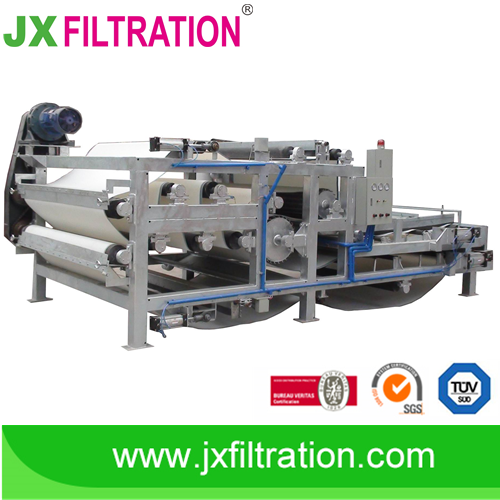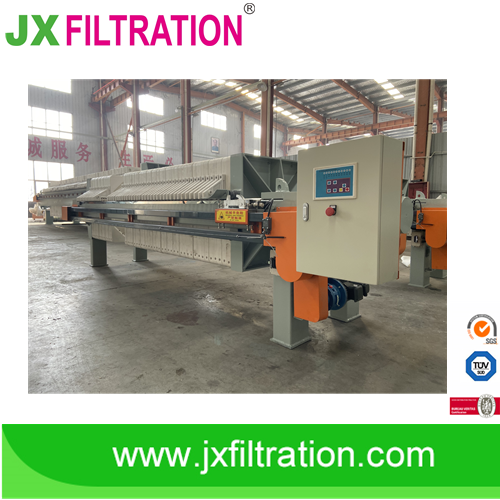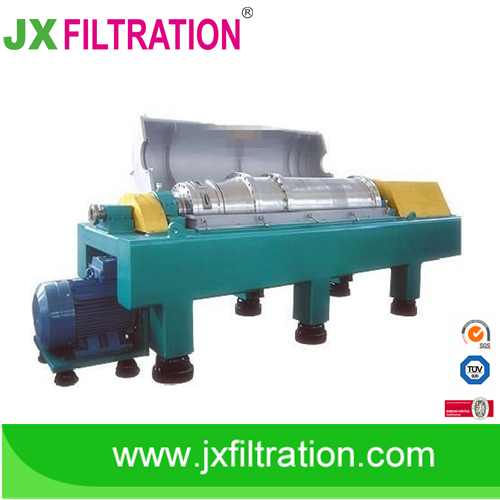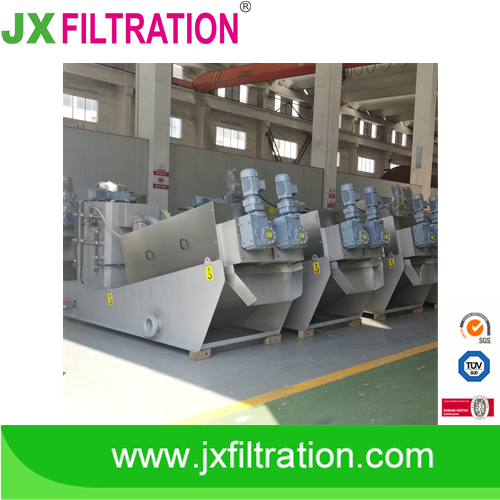Different Types of Sludge Dewatering Machine
The sludge dewatering machine commonly includes belt, plate and frame, centrifugal and screw press with different characteristics and application.
Belt sludge dewatering machine

Working Principle: The sludge layer is carried by the two tight filter belts up and down, passing through a series of regularly arranged rollers in an S-shape. By the tension of the filter belt, the squeezing and shearing force on the sludge layer is formed. The capillary water in the sludge layer is squeezed out.
Advantages: low price, common use, relatively mature technology.
Disadvantages: easy to block, requiring a lot of water to clean, causing secondary pollution.
Plate sludge dewatering machine

Working Principle: In a closed state, the sludge pumped in by the high-pressure pump is squeezed by the plate, so that the water in the sludge is discharged through the filter cloth.
Advantages: low price, good at dewatering of inorganic sludge, low moisture content of sludge cake.
Disadvantages: easy to block, need to use high-pressure pump, not suitable for the dehydration of oily sludge, difficult to achieve continuous automatic operation.
Centrifuge sludge dewatering machine

Working Principle: Consists of reprinting and a screw conveyor with a hollow shaft. The sludge is sent into the drum by the hollow shaft and is immediately thrown into the drum cavity under the centrifugal force generated by the high-speed rotation. The sludge is conveyed to the cone end of the rotating drum and discharged continuously from the outlet under the push of the screw conveyor; the liquid in the liquid ring layer is continuously overflowed from the weir orifice and discharged to the outside of the rotating drum by gravity.
Advantages: large processing capacity.
Disadvantages: high power consumption, high noise, severe vibration; difficult maintenance, not suitable for solid-liquid separation with close specific gravity.

Working Principle: The filter body is formed by the fixed ring and the moving ring stacked on each other, and the spiral shaft penetrates through it. The sludge is fully dewatered through gravity concentration and the internal pressure formed by the back pressure plate during the advancing process. The filtrate is discharged from the filter gap formed by the fixed ring and the moving ring, and the sludge cake is discharged from the end of the dewatering section.
Advantages: self-cleaning, non-clogging, low-concentration sludge can be directly dewatered; slow speed, power saving, no noise and vibration; fully automatic control can be achieved, 24 hours unmanned operation.
Disadvantages: Not good at dewatering sludge with large particles and high hardness; the processing capacity is small.
Any requirements, contact us now!
Grace
Email:grace@filtrationchina.com
Mobile/Whatsapp/WeChat:+86 17269571160

